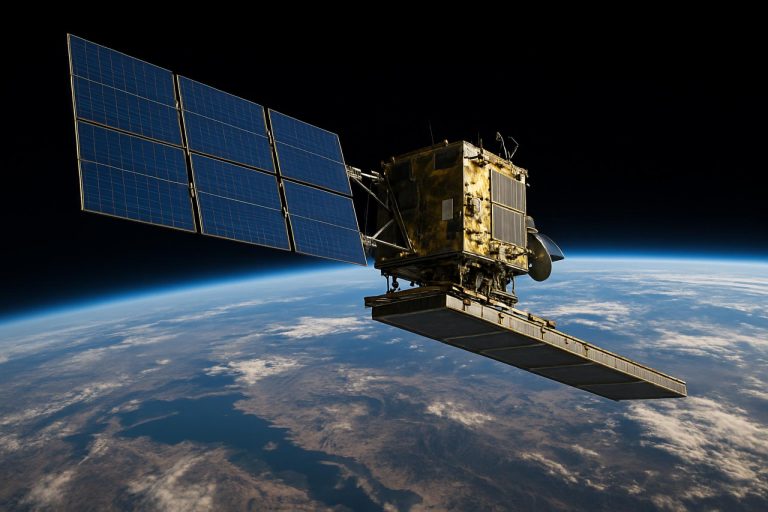
Japan’s ispace Prepares for Historic Moon Landing—and You Can Watch It Live
Japan’s ispace aims for redemption and history with a daring live-streamed moon landing—get the time, livestream info, and mission secrets here.
Quick Facts
- Landing Date & Time: June 5, 2025, 3:24 p.m. EDT (1824 GMT)
- Target Site: Mare Frigoris (“Sea of Cold”), Moon’s northern hemisphere
- Total Mission Duration: ~5 months from launch to completion
- Live Coverage: Starts June 5 at 2:10 p.m. EDT on ispace’s YouTube
A new era in lunar exploration is set to unfold as Japanese company ispace gears up for a heart-stopping moon landing—this time with redemption and glory on the line. Their Resilience lander, riding high after months in deep space, will attempt a private touchdown on the moon’s rugged surface this Thursday, and the world is invited to witness it live.
This is not just another moon shot. After a high-profile failure in 2023, ispace returns with improved tech, greater ambition, and a payload packed with scientific potential. If successful, Resilience would mark a major milestone for private lunar missions, signaling a new competitive age between SpaceX, Japanese tech firms, and international space agencies.
Q: When and How Can I Watch the ispace Moon Landing?
Set your alarm. The crucial moment is scheduled for June 5, 2025, at 3:24 p.m. EDT (1824 GMT), or June 6 at 4:24 a.m. in Japan. ispace’s global live stream will ignite the countdown starting at 2:10 p.m. EDT, broadcasting in both Japanese and English on their official YouTube channel.
Viewers can pick their preferred language stream and follow dramatic live updates as the Resilience lander approaches its pinpoint site near the “Sea of Cold”—a vast, basaltic plain rarely targeted in past missions.
What Makes Resilience’s Mission Unique in 2025?
Unlike its predecessor—or recent competitors like Firefly Aerospace’s Blue Ghost—Resilience navigated a painstaking, months-long “low energy transfer” to lunar orbit, minimizing fuel but maximizing suspense. The mission’s flexibility is stark: if the main landing area proves too risky, three backup sites are mapped out, with alternate landing windows ready for quick pivots.
This mission is also a technological marathon. After launching aboard a SpaceX Falcon 9 on January 15 alongside Blue Ghost, Resilience arrived in lunar orbit May 6 and has been fine-tuning its trajectory ever since.
Q: Where Will Resilience Land, and Why Is It Important?
The prime destination is Mare Frigoris—the “Sea of Cold”—on the moon’s northern near side, an expanse previously eyed by ispace in 2023. That earlier attempt ended in a crash; this time, the team has shifted its target area, armed with lessons learned and upgraded navigation.
Maps released by ispace highlight a bullseye landing location, with three alternate options unveiled for last-minute adjustments. Precision is non-negotiable on these windswept, airless plains.
How Long Will Resilience Survive, and What Will It Do?
Once landed, Resilience is expected to operate for approximately two weeks—one full lunar day. The entire operation, including its epic journey from Earth, will span about five months.
Onboard, the lander carries a diverse payload:
- Water Electrolyzer: Tests converting lunar water into hydrogen and oxygen.
- Algae-based Food Module: Explores growing algae for astronaut sustenance.
- Deep Space Radiation Probe: Monitors cosmic radiation’s impact on hardware.
- Tenacious Microrover: A mini-explorer to test cameras, a sampling shovel, and serve future return missions.
- Cultural Payload: A tiny red “Moonhouse” designed by Swedish artist Mikael Genberg and a commemorative Gundam-themed plate.
Q: What’s Next for Private Lunar Exploration?
ispace’s attempt rides a wave of renewed lunar interest from the private sector. Competitors range from U.S. startups to NASA’s Artemis program. This landing is a technology shakedown and a statement: private companies can safely reach, and work on, the lunar surface.
Success here could spark more commercial partnerships, lunar resource missions, and global collaboration in the race to establish sustainable human operations on the moon.
How to Watch and What to Do Now
To catch history in real time, bookmark ispace’s YouTube channel, set reminders, and follow live updates on social platforms. Consider joining space news communities like BBC Science and CNN World News for additional analysis.
Don’t Miss This Lunar Milestone: Watch, Learn, and Get Involved!
- 🎥 Go to ispace’s official YouTube channel for live coverage in your language
- 📅 Mark your calendar: June 5, 3:24 p.m. EDT (June 6, 4:24 a.m. JST)
- 🌕 Follow ispace and space agencies on X/Twitter for insider updates
- 🔬 Share the science—discuss experiments and payloads with friends
- 📝 Join the buzz: Comment or post during the live broadcast
Be the first to witness history as Japan’s Resilience aims for a flawless moon landing—tune in, spread the word, and watch the future of private space exploration unfold!



